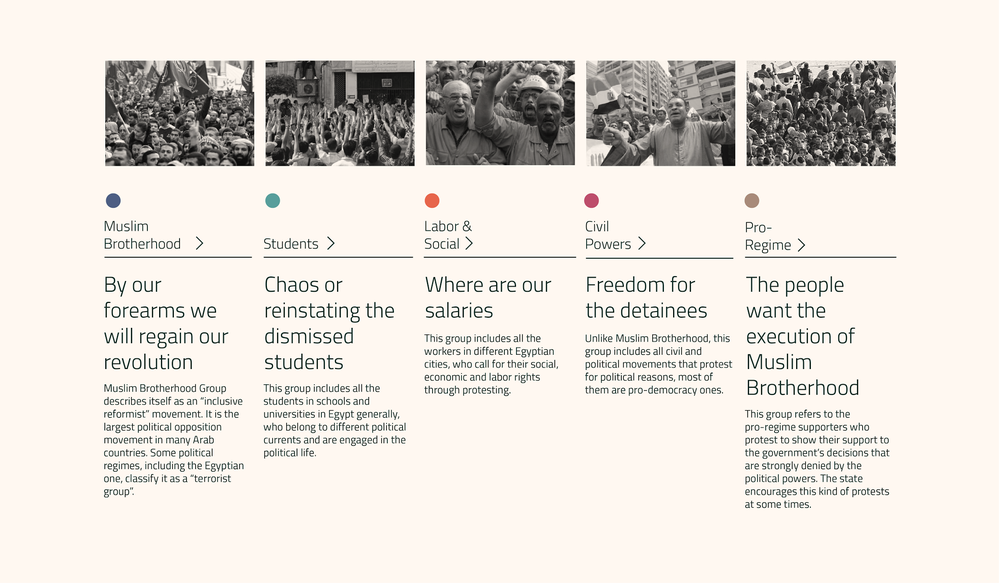Egypt's Protest Ban
About the CSO
The Arabic Network for Human Rights Information (ANHRI) is a legal institution with lawyers and researchers working on defending freedom of expression in Egypt and the Arab world.
The team
Back row: Iñaki (developer, Mexico), Mostafa (data researcher, Egypt), Terry (CSO representative, Egypt)
Front row: Semary (CSO representative, Egypt), Isabel (designer, UK), Shilka (designer, UAE)
ResultsANHRI wanted to show how despite an anti-protest law being introduced in Egypt in 2013, Egyptians still take to the streets to voice their opinions. They brought several narrative reports and a dataset on the crackdown on protests and demonstrations by the authorities since the start of the Arab spring to the workshop.
By the end of the workshop the ANHRI team produced a prototype for an interactive website featuring a data visualisation of their collected data.
Introducing Tahrir Square
The website starts by introducing Tahrir Square and protests in Egypt. The two images on the home screen juxtapose the freedom Egyptians had to protest in 2011, and an empty scene to depict the 2013 protest ban. The images establish Tahrir Square (which is actually circular) as a point of visual inspiration.
Meet the protesters
The main groups of protesters are then introduced with a short description, their slogan, and their corresponding colour. The idea is to set up a visual language that the user becomes familiar with as they navigate through the site.
Data visualisation
The final visualisation shows all protests for a chosen year with each circle representing a single clickable protest. The user can change how the data is displayed with the filters on the right. This exploratory method of visualisation allows the user to find their own stories within the data.







